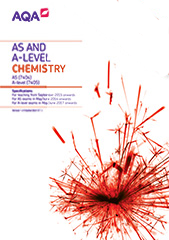3.1.4 Energetics
The enthalpy change in a chemical reaction can be measured accurately. It is important to know this value for chemical reactions that are used as a source of heat energy in applications such as domestic boilers and internal combustion engines.
Enthalpy change
Content |
Opportunities for skills development |
|---|---|
Reactions can be endothermic or exothermic. Enthalpy change (∆H) is the heat energy change measured under conditions of constant pressure. Standard enthalpy changes refer to standard conditions, ie 100 kPa and a stated temperature (eg ∆H298Ɵ). Students should be able to:
|
Calorimetry
Content |
Opportunities for skills development |
|---|---|
The heat change, q, in a reaction is given by the equation q = mc∆T where m is the mass of the substance that has a temperature change ∆T and a specific heat capacity c. Students should be able to:
Students will not be expected to recall the value of the specific heat capacity, c, of a substance. |
MS 0.0 and 1.1 Students understand that the correct units need to be used in q = mc∆T Students report calculations to an appropriate number of significant figures, given raw data quoted to varying numbers of significant figures. Students understand that calculated results can only be reported to the limits of the least accurate measurement. |
Required practical 2 Measurement of an enthalpy change. |
AT a and k PS 2.4, 3.1, 3.2, 3.3 and 4.1Students could be asked to find ∆H for a reaction by calorimetry. Examples of reactions could include:
|
Applications of Hess’s law
Content |
Opportunities for skills development |
|---|---|
Hess’s law. Students should be able to:
|
MS 2.4 Students carry out Hess's law calculations. AT a and k PS 2.4, 3.2 and 4.1Students could be asked to find ∆H for a reaction using Hess’s law and calorimetry, then present data in appropriate ways. Examples of reactions could include:
|
Bond enthalpies
Content |
Opportunities for skills development |
|---|---|
Mean bond enthalpy. Students should be able to:
|
MS 1.2 Students understand that bond enthalpies are mean values across a range of compounds containing that bond. |
